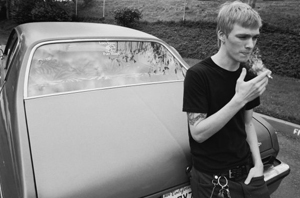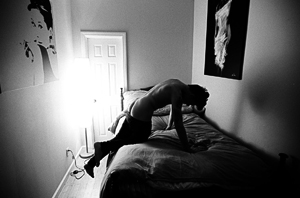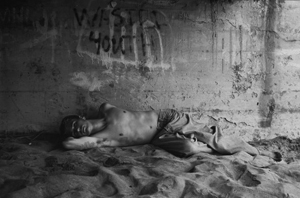|
|
|
|
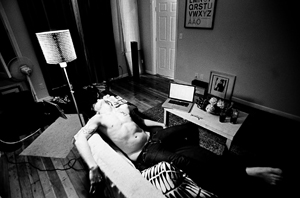 |
 |
 |
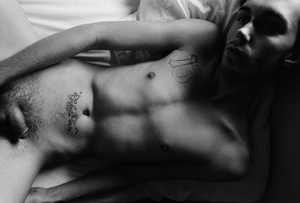 |
America's Finest Kids
Photographs by Terry Smith
June 2nd - June 30th, 2012
Reception for the Artist Saturday June 2, 7-10pm
drkrm is pleased to present America’s Finest Kids, photographer Terry Smith’s photographic essay of youth culture in Southern California, which will be on display from June 2nd through June 30th, 2012. Smith’s images are reminiscent of the stark documentary reality of Larry Clark, the sexuality of Bruce Weber and the erotic street photography of Herbert List.
"Sometimes photography does not need ideas. It does not need to "build bridges," "explore worlds" or even "document reality." Photography has a scientific vein that allows it to skirt the art world's confining rhetoric. There's a long history of this. Think, for instance, of Eadwear Muybridge's 19th century motion and anatomy experiments.
Nowadays, photo portraiture in particular can be independent of rhetoric because in it a man can be a man, a woman can be a woman, and a child can be a child. In Terry Smith's America's Finest Kids, currently displayed at drkrm gallery, a naked young man without an inch of fat in his body is just that. Try seeing Picasso's Les Demoiselles d'Avignon as nothing more than five prostitutes if you can. Only photography has that ability.
And yet, as straight-forward as the images in America's Finest Kids are, a lot is up to the viewer. This is true about all art experiences, but much more so in this case. Smith's photos showcase a very particular kind of homo-eroticism: older eyes lusting after the young, almost too young, male body. It might be too risqué for some people.
You can argue that one can focus on the photographs' aesthetic and social values instead. A person who is not into young beach-dwelling men can, for instance, look at the way the sunset lights up a face. You can add that the photos show some cultural elements of California youth: skateboards, teenage haircuts, tattoos and piercings. And that the viewer can look at things like model selection, postures, light, angles and locations. You can argue that the photos can offer much more besides sex.
There's something to that, but I don't really buy it. Those who can't look at Terry Smith's photos with lust will probably miss 90% of what they have to offer.
America's Finest Kids is a collection of lust-triggers. Everything else is secondary. Even Smith's own goals and personal background seem secondary. Knowing that he was born into a Christian family in Oklahoma in 1962 and that he has been involved in helping at-risk youth in California, Haiti and other places doesn't add much to the experience. Knowing that his goal is "to show that, despite their outward appearance, these 'damaged' kids are all beautiful and that he "simply want[s] to celebrate the beauty and strength found in the American male" is almost distracting.
Again, one of the strengths of photography is that it can do away with rhetoric. In this case, dressing up such a bare (pun intended) group of images with social, anthropological or pseudo-literary aims obfuscates what's really there.
This brings me to my last point. America's Finest Kids is wrongly being called a photographic essay. The essay is a literary genre. In photography, the essay label is used as a metaphor to emphasize three aspects about a visual body of work. 1) It's exploratory nature. 2) It's short, narrow scope. 3) It's wish to make a tentative statement about a particular issue. America's Finest Kids does not do any of the three.
Smith has been photographing young men for 15 years. He has taken thousands of photographs. If we were to stick to literary metaphors, I would call it a sexual memoir of vast proportions. Because --come on now-- America's Finest Kids isn't an exercise in anthropological documentation. Even when the young men are photographed in their own rooms, Smith somehow manages to pull them into his own hyper-sexualized realm (I'm merely describing, not qualifying here). He never silently steps into the subject's world as a documentarian would. As a result, one ends up learning more about Smith's sexual predilections than about his subjects' lives.
All of the the images are carefully lit, well-composed and display a gift for capturing the subjects right at the point between adolescence and manhood. The possibilities for a very particular kind of homo-eroticism are there, but first the viewer must be able to synch-up with Smith's gaze. If not, it might be like buying an ice cream cone, tossing the scoop and licking the cone. "
--Patricio Maya Solís, Pop Culture Critic
patriciomaya.com
drkrm is an exhibition space dedicated to the display of popular cultural images, fine art photography, documentary and photo journalism, cutting edge and alternative photographic processes. In addition, drkrm is a full-service black & white photo lab. drkrm is located at 727 S. Spring Street in the Gallery Row district of Downtown Los Angeles. Regular hours are Wednesday-Saturday 12-6, Sunday 12-4 and by appointment.

